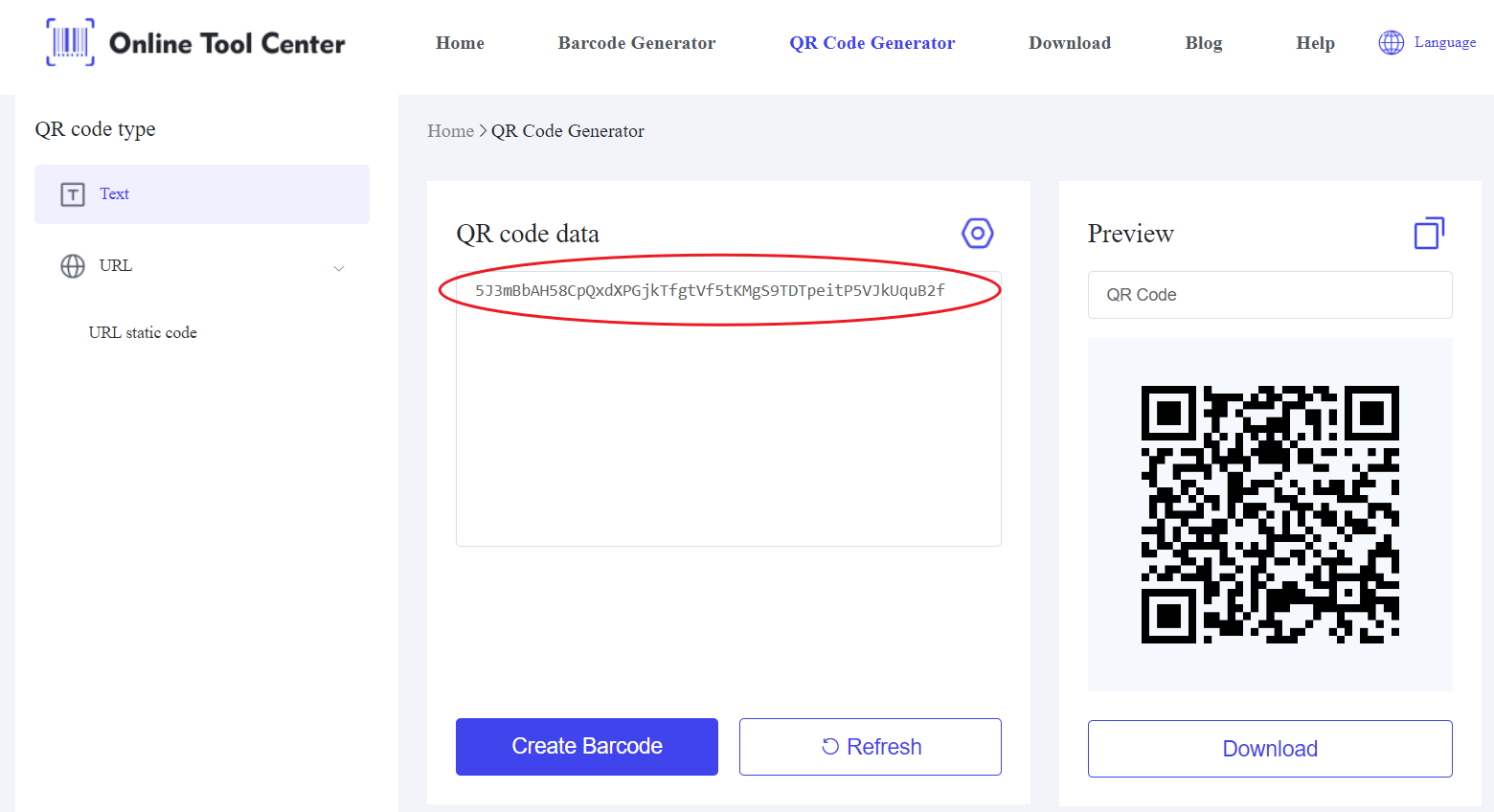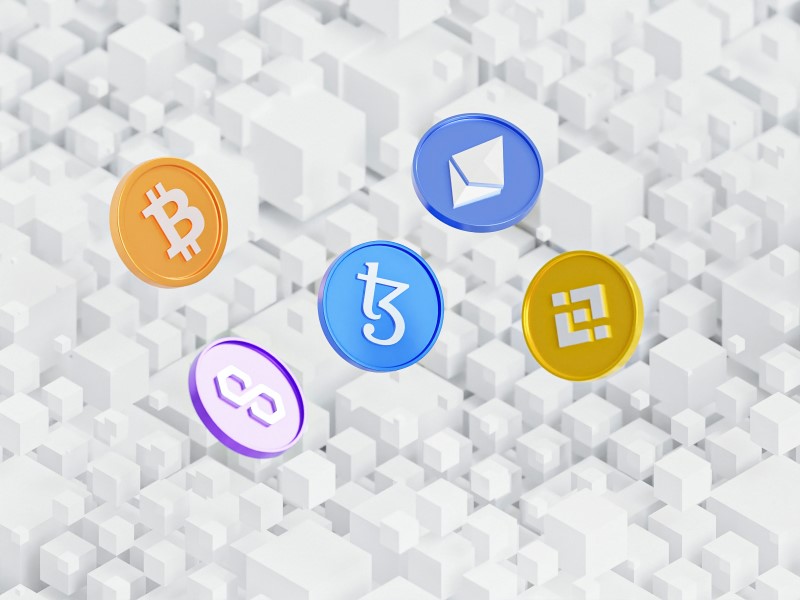What is a Blockchain Private Key QR Code?
In the world of blockchain, security is not just a priority, it's the foundation of the entire system. A crucial element of this security is the blockchain private key.
This private key, a long and complex string of alphanumeric characters, is what enables you to access and control your digital assets.
The blockchain private key QR code converts this critical key into a scannable format, simplifying the management of your key without compromising security, if handled properly.
Example of Blockchain Private Key
A blockchain private key is a long, randomly generated string of alphanumeric characters. Here's an example of what a blockchain private key might look like:
5J3mBbAH58CpQxdXPGjkTfgtVf5tKMgS9TDTpeitP5VJkUquB2f.
This example represents a private key for a Bitcoin wallet. It's crucial to keep this key secure, as it grants full access to the corresponding blockchain assets.
If anyone else obtains this key, they could control and transfer the assets without the owner's permission.

The Role of Private and Public Keys in Blockchain
To fully grasp the significance of a blockchain private key QR code, it's important to understand the function of private and public keys in blockchain technology:
● Public Key: This key can be shared with anyone. It allows others to send you cryptocurrency or other blockchain-based assets. Public keys are often represented as QR codes for ease of use, allowing the owner to receive assets by simply scanning the code.
● Private Key: In contrast, the private key must remain confidential. It is used to sign transactions, essentially proving that you are the owner of the assets in your blockchain wallet. The private key is never shared and should be kept secure at all costs.

How Does a Blockchain Private Key QR Code Work?
A blockchain private key QR code encapsulates your private key into a QR code format, making it easier to store and use.
Instead of entering a long string of characters manually, a process prone to errors, you can simply scan the QR code to unlock your wallet or authorize transactions. This convenience is invaluable, especially when quick access is required.
Benefits of Using a Blockchain Private Key QR Code
The primary advantage of using a blockchain private key QR code is the ease of access it provides. With a QR code, you can avoid the tedious and error-prone process of entering long alphanumeric keys manually.
This is particularly useful for those who regularly access their blockchain wallets and require a reliable, quick method to do so.
Moreover, a blockchain private key QR code allows for secure backups of your private key.
For example, you could store the QR code on a physical medium (like a piece of paper or a secure USB drive) in a safe location, ensuring you have access to your key even if your primary digital device fails.
How Can I Get My Blockchain Private Key?
To obtain your blockchain private key, you typically need to access the settings or security section of your blockchain wallet application.
Most wallets, especially non-custodial ones like hardware or software wallets, generate the private key when you first create the wallet.
During this setup, you'll often be prompted to back up your private key or recovery phrase (a 12-24 word seed phrase), which can be used to regenerate your private key if needed. It's crucial to store this key securely, as anyone with access to it can control your assets.
If you haven't saved your private key during the initial setup, you may still be able to retrieve it by navigating through your wallet's options.
Look for features like "Export Private Key" or "Backup Wallet." Remember, your private key should never be shared with anyone, and it's advisable to store it offline in a secure place to protect it from unauthorized access.
Potential Risks and How to Mitigate Them
Despite the benefits, there are significant risks associated with blockchain private key QR codes. If someone gains access to your QR code, they can control your blockchain wallet and its assets.
Unlike traditional banking, blockchain transactions are irreversible; once assets are transferred, they cannot be recovered.
To mitigate these risks, consider the following best practices:
1. Use a Trusted Generator: Always use a blockchain secure QR code generator that is well-regarded in the industry.
2. Store the QR Code Safely: Avoid storing your blockchain private key QR code on internet-connected devices. Instead, print it out and store it in a physical safe, or use a hardware wallet designed for secure storage of cryptocurrency assets.
3. Multiple Backups: Create multiple backups of your private key in different formats and store them in separate secure locations. This redundancy ensures that you can still access your assets if one backup is lost or damaged.
4. Regular Security Audits: Periodically review your security measures to ensure that your private key remains safe. Update your practices in response to new threats or changes in your personal security needs.
In general, the blockchain private key QR code is a powerful tool that brings both convenience and security to the management of blockchain assets.
Similarly, an NFT QR code can be used to securely and easily manage ownership and transfer of NFTs, ensuring that unique digital assets are protected and easily accessible.
Both types of QR codes streamline the user experience while maintaining the highest levels of security in the digital asset space.

By understanding its role and following best practices, such as using a blockchain secure QR code generator, you can effectively protect your digital assets while enjoying the ease of QR code technology.
For a secure and reliable QR code generation, consider using a trusted tool like our free QR code generator. This will help ensure that your blockchain private key QR code is generated and managed with the highest level of security.
FAQs about Blockchain Private Key QR Code
1. Can QR codes be used to verify identity in blockchain?
Yes, QR codes can be used to verify identity in blockchain systems. They can encode public keys or identity information, allowing users to scan the QR code to verify their credentials or access services securely.This is often used in decentralized identity systems where the QR code represents a digital signature or a verifiable credential linked to a blockchain-based identity.
2. Does the blockchain QR code expire?
A blockchain QR code itself does not expire, as it typically represents static information like a public or private key.
However, the data it encodes, such as a session token or a time-sensitive transaction request, might have an expiration. The validity of the QR code depends on the context and how the encoded data is managed by the blockchain application.




